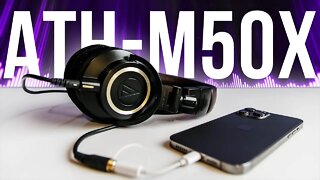Premium Only Content

Dior - 8D Audio - Use HeadPhones
i convert this music to 8d.
Use Headphones to know what is 8d Audio.
i do not own the music. credit for audio go to their respective owners
And last "Disclaimer"
Copyright Disclaimer Under Section 107 Of The Copyright Act 19876, Allowance Is Made For Fair Use For Purposes Such As Criticism, Comment, News Reporting, Teaching, Scholarship, And Research. Fair Use Is A Use Permitted By Copyright Statute That Might Otherwise Be Infringing. Non-profit, Educational Or Personal Use Tips The Balance In Favor Of Fair Use.
8D audio uses the principles of binaural recording to trick our brains into thinking that sounds are coming from different places in three-dimensional space. When a song is given the 8D-treatment, it can create the impression that you’re standing in the middle of a room (or a gym, or a concert hall, etc.) while all of the musicians and vocalists magically “move around” you.
Try it out below with this sample Eminem track — make sure you’re wearing headphones. If you’re a fan of listening to music with headphones, you’ve probably encountered lots of tracks — typically from the ’70s heyday of studio production — that use this movement effect. The difference is that most professionally produced songs use it very sparingly, and never continuously.
On the other hand, 8D uses it as a defining characteristic. 8D tracks are always on the move through space.
The idea behind that signature movement of 8D audio is that it creates a soothing feeling, though whether it actually does or not is highly subjective. In this way, 8D audio is similar to ASMR (autonomous sensory meridian response) — another YouTube audio phenomenon whose fans insist can help them relax, sleep better, or just experience pleasurable chills. There are others, of course, who find it awful.
8D audio work::
The brain figures out where sounds are coming from through several cues. There’s a discrepancy in how long a sound takes to reach each of our ears. A sound that originates to our right side will hit our right ear ever so slightly faster than it hits our left ear. That’s one cue. Then there’s echo and reverberation of sound as it bounces off objects in our environment. Finally, there’s filtering — how the actual quality of the sound changes from one ear to the other based on how something as simple as the shape of our heads affects it. Our sense of visual depth perception works using similar kinds of cues, the biggest being the discrepancy between the version of the world that each of our eyes sees.
So if you can manipulate what each ear hears by faking these cues, it’s possible to trick the brain into thinking it’s hearing a sound that originates from a specific point in space. Binaural audio does just that, but it requires the use of headphones in order to isolate what each ear hears. Far from a new idea, the science of binaural audio has been around for over 100 years.
Analog binaural recording is done by physically moving a sound source around a set of microphones that simulate human ears, in order to achieve this effect. But thanks to 3D audio software tools, you can do the same thing digitally on a computer — no studio or special microphones required.
-
 7:43
7:43
Glitz & Glam TV Productions
3 years agoSony MDR-7506 Best Headphones For Audio
79 -
 10:19
10:19
THETRUTHWITHTREVOR
3 years agoSecond review of Campfire Audio Cascade Headphones
7 -
 4:19
4:19
seezsantos
3 years agoWhy The ATH-M50X Are Still THE BEST Audio Monitoring Headphones
18 -
 4:14
4:14
benonistudio
3 years agoWaves Nx Head Tracker - 3D Audio For Headphones 🎧
104 -
 7:02:53
7:02:53
Akademiks
7 hours agoDay 1/30 Kanye West Interview Part 2 OTW. Young Thug Probation REVOKED? Lil Baby Putting Hits on Ppl
107K12 -
 1:10:48
1:10:48
Man in America
13 hours agoPam Bondi Wants the DEATH PENALTY—But Was Mangione FRAMED? The Evidence Will SHOCK You
67.9K32 -
 1:30:51
1:30:51
Glenn Greenwald
11 hours agoSubstack CEO on Protecting Writers from Speech Crackdowns; Week in Review: Matt Taibbi's Censorship Hearing Testimony, Fascism Expert Flees the U.S., and More | SYSTEM UPDATE SHOW #433
173K92 -
 10:57:58
10:57:58
Dr Disrespect
17 hours ago🔴LIVE - DR DISRESPECT - PGA TOUR 2K25 - ONLINE RANKED UNDEFEATED
180K25 -
 1:59:49
1:59:49
2 MIKES LIVE
13 hours ago2 MIKES LIVE #200 It's our 200th Show with guests Paul Kanitra and Dan Nunn!
70.8K8 -
 21:41
21:41
JasminLaine
10 hours agoCarney HUMILIATED—Danielle Smith DESTROYS 'Garbage Polls' & Trump RUINS His Plan
69.5K26